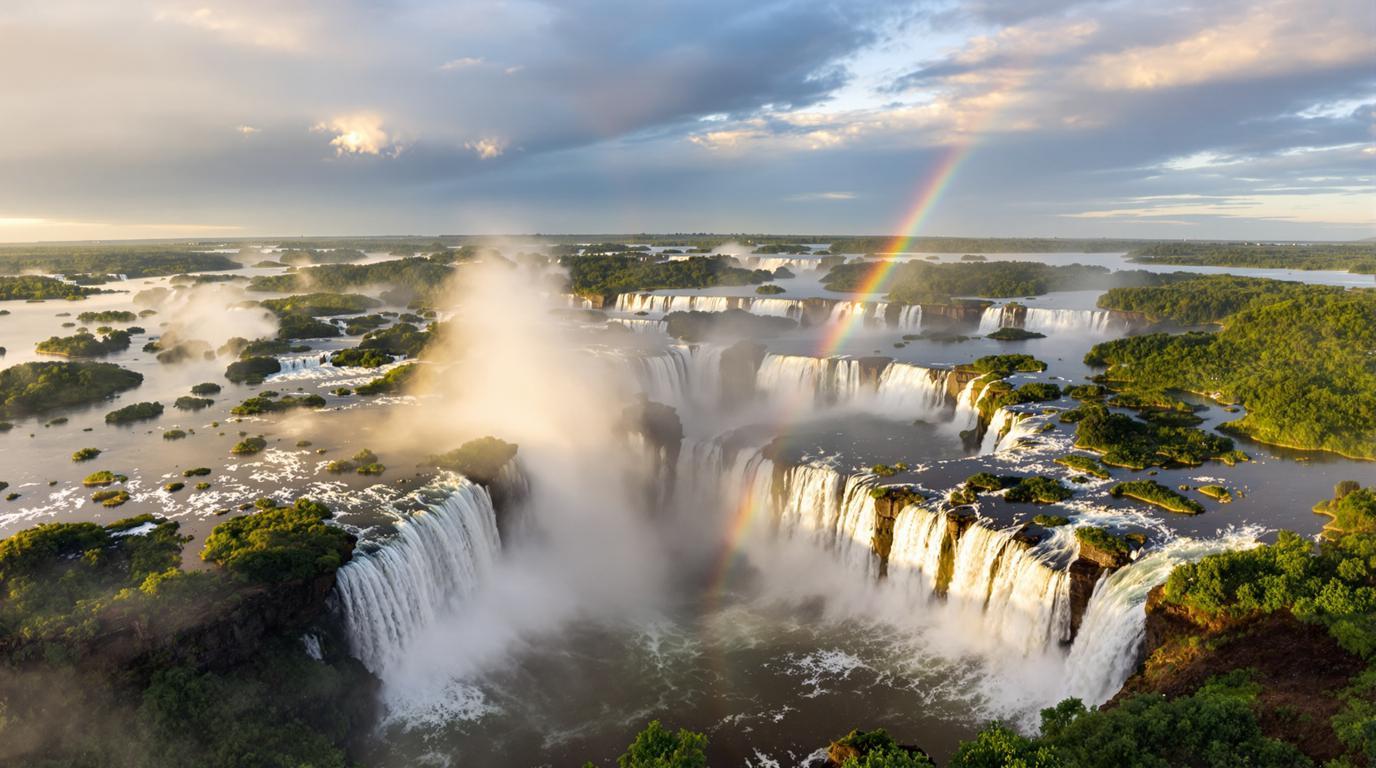Iguazu Falls: Earth’s Most Spectacular Waterfall System Where Two Nations Meet
Nature’s grandest performance
Standing before Iguazu Falls, where mist rises like ghostly columns between Argentina and Brazil, it becomes immediately clear why Eleanor Roosevelt reportedly exclaimed, “Poor Niagara!” upon seeing this behemoth. With over 270 individual cascades stretching nearly 3 kilometers across the border of Misiones province and Paraná state, this isn’t just another waterfall – it’s Earth’s most magnificent water theater.
“The falls speak their own language – a thunderous conversation between two countries that’s been ongoing for millennia,” explains Ricardo Mendez, a veteran Iguazu guide of 20 years. “No photograph can capture the sensation of standing amid this much raw power.”
A geological marvel 150 million years in the making
Born from ancient volcanic activity, Iguazu sits atop the Paraná Plateau, where the Iguazu River calmly flows before dramatically plunging over a basalt cliff. The most iconic section, Devil’s Throat (Garganta del Diablo), drops water 82 meters into a permanent cloud of spray where rainbows dance perpetually. Unlike Italy’s famous architectural mistakes, Iguazu’s “flaws” only enhance its wild beauty.
Two countries, two distinctly breathtaking experiences
The Argentina side (Misiones) offers intimate encounters through extensive boardwalks that bring you face-to-spray with numerous falls. Brazil’s side (Paraná) delivers panoramic vistas that showcase the falls’ immense scale – a perspective akin to watching an orchestra from the balcony rather than from among the musicians.
May through September offers clearer viewing conditions, though January and February showcase the falls at their most ferocious flow. Like Iceland’s famous blue lagoon, Iguazu transforms dramatically with the seasons.
The Atlantic Forest: An emerald fortress
Beyond the falls’ thunder lies a biodiversity hotspot housing over 400 bird species, elusive jaguars, and playful coatis. The surrounding Atlantic Forest creates a verdant cathedral where sunlight filters through in golden shafts, illuminating rare orchids and prehistoric-looking ferns. Unlike the ochre landscapes of Provence, Iguazu’s palette runs cool – emeralds, sapphires, and silvers dominate.
Hidden vantage points most tourists miss
While thousands crowd the main walkways, savvy travelers seek out the lesser-known San Martin Island trail on the Argentine side. Here, the crowds thin dramatically, and you’ll find yourself virtually alone amid thundering cascades. Similarly, early arrivals to the Brazilian Trilha do Poço trail often have magical misty moments all to themselves before the tour buses arrive.
“Come at first light,” suggests Gabriela Torres, local photographer. “That’s when the falls belong to the birds and the mist – it’s like witnessing the birth of the world every morning.”
Beyond the falls: Cultural crossroads
The twin gateway towns of Puerto Iguazú (Argentina) and Foz do Iguaçu (Brazil) offer fascinating glimpses into South American border culture. Unlike Ecuador’s Quito, where you can stand in two hemispheres, here you can experience two distinct national characters mere minutes apart.
Don’t miss the chance to sample churrasco (Brazilian barbecue) or Argentina’s famous steaks paired with Malbec. For a truly unique perspective, splurge on a helicopter tour that reveals the falls’ horseshoe shape – a perspective that transforms understanding of this natural wonder’s scale and formation.
Practical pathways to paradise
Both countries have international airports (IGR in Argentina, IGU in Brazil) with frequent connections from Buenos Aires and São Paulo. Park entrance fees run approximately $45 (Argentina) and $22 (Brazil). Like hidden Mediterranean villages, getting here requires some effort – but rewards visitors with experiences impossible elsewhere.
Iguazu doesn’t whisper its magnificence – it roars it across international borders. Standing before this liquid giant, as indigenous Guaraní people have for millennia, you’ll understand why they named it “big water.” It remains perhaps Earth’s most humbling reminder that some natural wonders simply transcend words, nations, and time itself.
